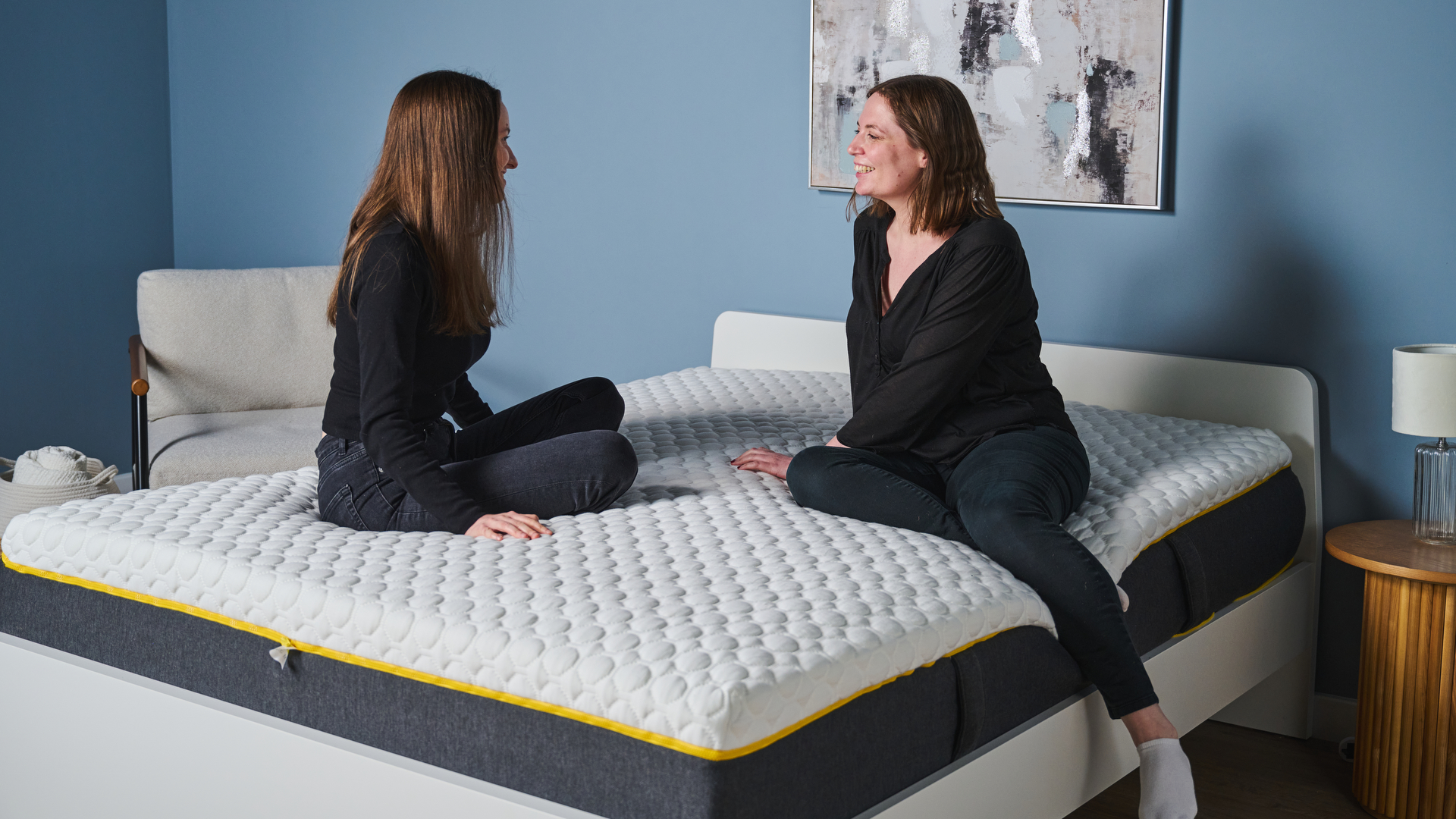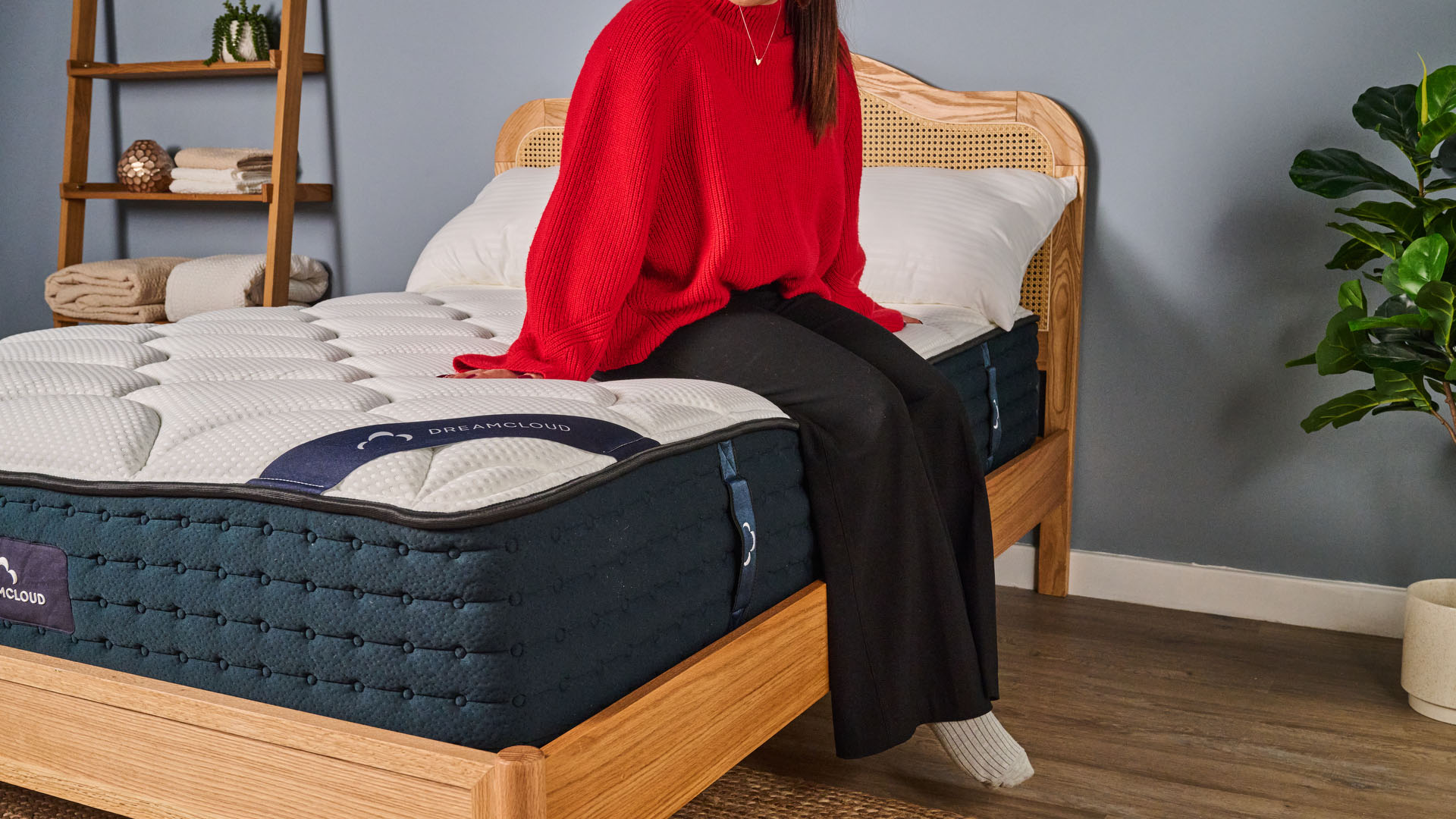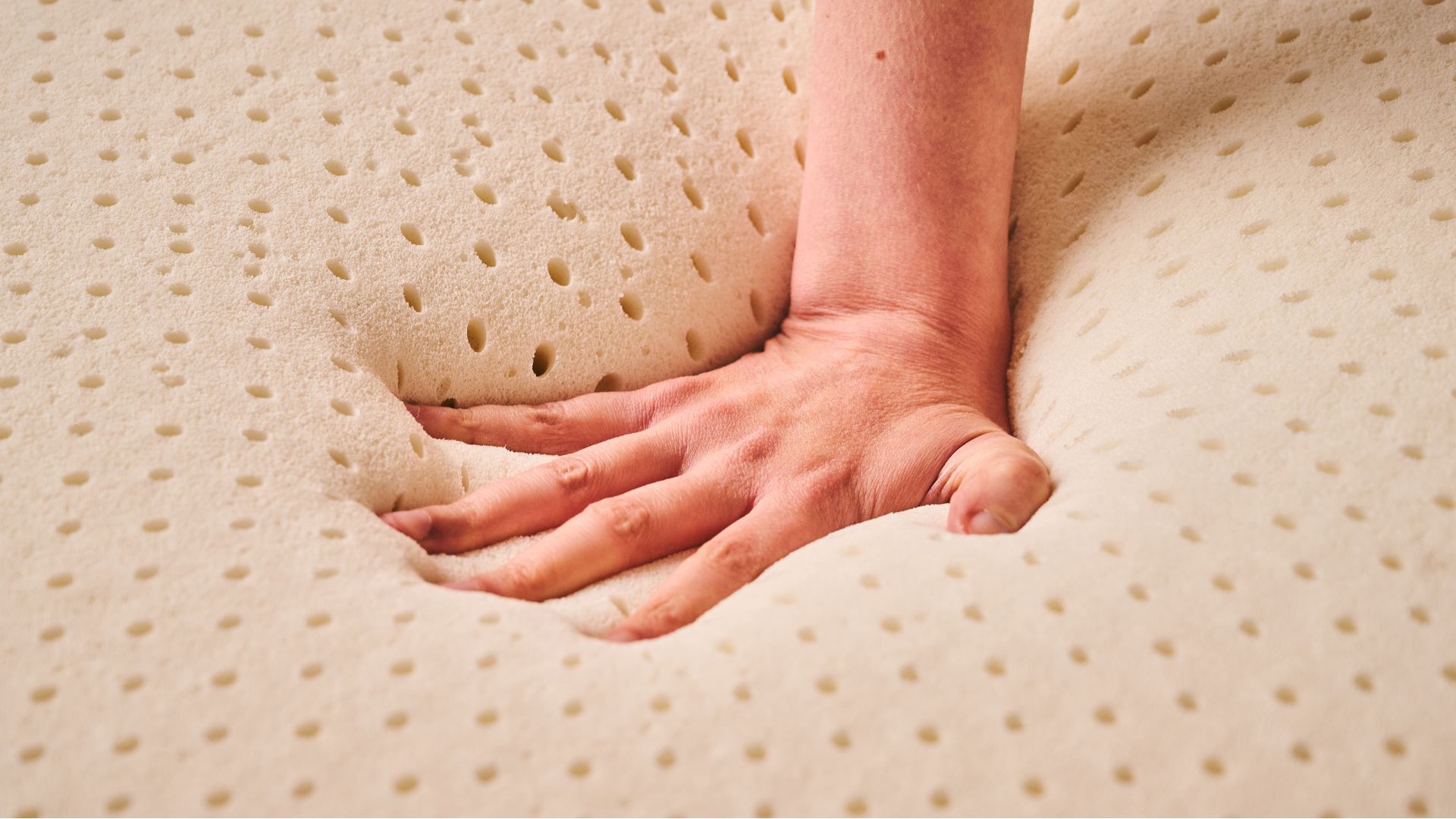How long does a mattress last? Memory foam, latex and hybrid types explained
We explore how long different types of mattresses should typically last, and share tips on taking better care of your bed

How long your mattress lasts largely depends on what it's made from. Most of the best mattresses we've tested this year come in the form of foam, latex, hybrid or innerspring designs. Depending on the materials and composition, these vary in durability, with some holding up longer than others. The good news? A few smart care habits can go a long way towards extending your bed's lifespan.
On average, most mattresses last around eight years but that number can change based on the build quality, materials and how well you look after it. A warranty of 10 years or more (like those offered by brands like Saatva, Tempur-Pedic and Purple) is usually a solid sign of lasting craftsmanship.
Below, we break down how long each mattress should typically last — including tell-tale signs that it's time for an upgrade and how to keep your current one feeling new and fresh for long.
How long does a mattresses last: by brand
How long should a mattress last depends on many factors, from the materials used to make it through to how well it's cared for from day one. Most brands are unable to provide you with a definitive number of years, so we’re mostly dealing with average lifespans here.
The key fact to remember here is that the better the mattress quality, the longer it will last. For instance, if you consider the brand Tempur-Pedic, its luxury mattresses can last around 10 years, while the more affordable options may reach about eight years with proper care. And if you snag one during a Tempur-Pedic mattress sale, you're getting even better long-term value.
Mattress guarantee varies by brand and build. Below we’ve included rough lifespans based on general guidelines stated on each brand’s website. Here’s how long, on average, you can expect mattresses from the following brands to last:
Tempur-Pedic mattress | 10 years |
Nectar mattress | 7-10 years |
Leesa mattress | 7-10 years |
DreamCloud mattress | 7-10 years |
Sealy mattress | 8-10 years |
Helix mattress | 7-15 years |
Purple mattress | 10 years |
Casper mattress | 10 years |
Sleep Number | 15 years |
Beautyrest mattress | 7-10 years |
Serta mattress | 8-10 years |
Dormeo mattress | 10 years |
We’d recommend using these as rough approximations, rather than taking them as gospel. But it should be clear from a quick glance that all of the brands listed above make mattresses that should last you at least seven years, if not much longer. That, coupled with long warranties, is the hallmark of a quality bed.
Get instant access to breaking news, the hottest reviews, great deals and helpful tips.

How long do memory foam mattresses last?
Thanks to their durability, the best memory foam mattresses tend to last a little longer than other types. Plus the all-foam constructions means that there are fewer components to deteriorate quicker and compromise the overall quality. You can make your memory bed last for approximately 10 years, if you regularly rotate and air or clean it.
How do you know when it's time to replace your memory foam mattress? If you're no longer getting proper pressure relief – one of the major functions of contouring foam beds – and instead wake up with aches and pains, it's clearly time for a new mattress. You may also notice that the foam no longer bounces back as quickly as before, has become softer or has started turning yellow over time.
However, if you think your memory foam mattress is generally serving you well and has not yet reached the 10-year mark but needs a boost in terms of better comfort and firmness, we recommend investing in a plush mattress topper instead.
How long do hybrid mattresses last?
Hybrid mattresses tend to cost more than all-foam beds but does this mean they are more durable? A good quality hybrid – like the ones featured in our best mattress in a box guide – will last seven years with proper care. As we mentioned, the length of the warranty is a good indicator of how long the manufacturer expects it to last.
The lifespan of a hybrid mattress depends on the quality of the materials used in the different layers and particularly the durability of the main core. Top sleep brands such as Purple and Casper use high-grade foams and coils designed to resist sagging and offer lasting comfort for up to 10 years.
Unlike memory foam beds, hybrids are made up of multiple layers, usually with a sturdy base and a softer top and therefore should not be flipped, since this can cause damage and void the warranty. You should, however, be able to rotate your bed which can work well for making it last longer.

How long do latex mattresses last?
Latex mattresses are some of the most durable beds you can buy. High-quality 100% natural or organic latex mattresses can last anywhere from 15 to 25 years, making them a worthwhile long-term investment.
While the two main latex types – Dunlop and Talalay – are impressively long-lasting compared with alternatives, the latter tends to be softer and less dense, and hence may wear slightly faster.
However, if the latex is blended or synthetic, expect a shorter lifespan — closer to 10 or fewer years. Off-gassing, the strong odor indicating the release of volatile compounds, is another issue you may struggle with, when opting for synthetic latex. It also tends to soften a lot more than natural latex, meaning by the end of its 5-10 years, it will not be supporting you well.
Need quick recommendations? Look out for 100% natural latex mattresses from from Avocado or Birch, both of which come with a solid 25-year warranty. Our round-up of the best Avocado mattress sales and deals will also help you know about the latest discounts.
How long do innerspring mattresses last?
Traditional innerspring mattresses usually last around five to seven years, largely because their metal coils tend to lose tension and cause sagging over time — something your back definitely won't thank you for.
They remain popular thanks to their affordable price tags, but it's worth thinking long term. A cheaper innerspring might save you money upfront, but frequent replacements can make it a false economy.
There's also the hassle of figuring out how to dispose your mattress responsibly after each period of five to seven years. However, the reality is that an innerspring mattress is a great choice if you want a cheaper bed for your guest room.
How to help your mattress last longer

While we have discussed the average lifespan of the different mattress types, there's plenty you can do from Day One to make it last longer. Here are some pointers to consider:
- Rotating the mattress can keep the surface even and boost the support. Check out our guide to rotating a mattress. Some mattresses can also be flipped, but check first, as many are one-sided only.
- Cleaning and airing your mattress will keep it fresh. There are several easy ways to do this, which we cover in our feature on how to clean a mattress. Also make sure to regularly wash your bedding as this is the layer in direct contact with your skin and therefore also your sweat, body oils and germs. It’s also a good idea to keep pets off your mattress, especially heavier dogs, as their weigh (and accidental tears from claws) can quickly wear down a mattress.
- Using one of the best mattress protectors will safeguard your bed from spills, stains, sweat and germs. Opt for a full mattress encasement if your priority is to keep bed bugs and other allergens from getting into your bed.
- Get a sturdy foundation, such as a traditional bed frame with equally spaced slats, a box spring or a platform. Check the mattress manufacturer’s recommendations on the best foundation to buy.
- Don’t jump on your mattress! As fun as this is, it can lead to faster wear and tear, especially on any springs.
Common signs that your mattress needs replacing
As a general rule of thumb, once you've hit the seven-year mark, your mattress might start to show signs of normal wear and tear — think sagging, lumps, yellowing and uneven support.
If it is still keeping you healthy and sleeping well, then it may have more time left. But if the following are true, then consider replacing it soon:
- You have more aches and pains, including back pain, and frequently wake throughout the night
- The mattress is turning yellow due to ageing
- It has tears and worn patches on it
- It feels stifling to sleep on (pick a cooler model when you next buy)
- You sleep better in any other bed
For more information on why the above points are a no-no when it comes to healthy sleep, read our guide to 5 signs you need to break up with your current mattress.
The bottom line is that your mattress has a huge impact on your sleep, so it's worth investing in the best quality one you can afford — it will last longer, save you money over time and help reduce landfill waste.

Becky is a Sleep Staff Writer at Tom’s Guide covering all things sleep-related including product reviews, research studies, news and explainers. She works on specialist bedding content and is responsible for buyer’s guides like the best pillows for all sleepers and best mattress protectors focusing on popular brands such as Tempur-Pedic, Avocado, Coop Home Goods and more. Becky is a PPA accredited journalist who is keen to explore the intricacies of sleep, its effects on skincare, mental wellbeing and work performance. While not thinking of sleep, she can be seen reading in cosy bookshops or learning about global food culture.
You must confirm your public display name before commenting
Please logout and then login again, you will then be prompted to enter your display name.
